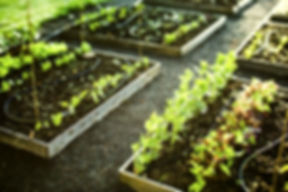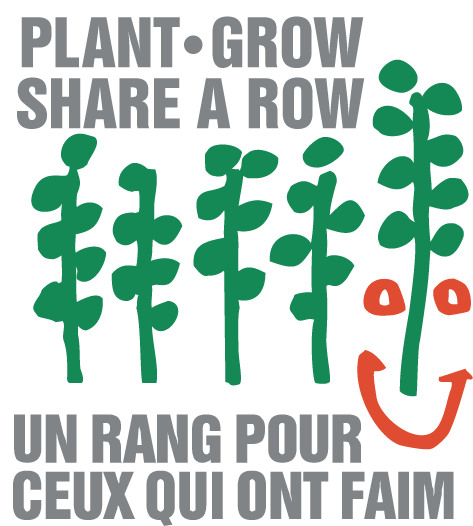
ABOUT US
Plan • Grow • Share a Row builds on the long-standing tradition of gardeners loving to share their harvest with others. It is a people-helping-people program to assist in feeding the hungry in their own communities.
OUR STORY
The program has its roots in many communities in North America. The Grow-A-Row program started in Winnipeg, Manitoba in 1986, initiated by Ron and Eunice O’Donovan. That was the year that they produced more potatoes in their backyard garden than their family could consume. They decided to donate the excess to the local food bank, Winnipeg Harvest. Their idea was met with such enthusiasm that the O’Donovan’s decided to encourage their friends and neighbours to also donate their surplus produce. Since then, over 1.4 million pounds of fresh fruits and vegetables have been given to Winnipeg Harvest through the Grow-A-Row program.
This program has been taken up by other Canadian communities such as Edmonton, Alberta, London, Ontario as well as regions in Quebec such as the Laurentians and the Rigaud, Hudson, St. Lazare and Dorion area. Edmonton’s program is spearheaded by the Edmonton Horticultural Society with the support of local businesses. London’s program is under the leadership of London Composts!, a local partnership of businesses, government and non-profit organizations dedicated to raising awareness of the value of composting and compost. In Quebec, the campaign is called Un rang pour ceux qui ont faim and was initiated by La Presse, the television program Fleurs et Jardins, and the Quebec Food Bank Federation.
Plant a Row for the Hungry was developed by the Garden Writers Association of America and launched in the United States in 1995. Supported by their members in their own communities, this innovative public service campaign encourages gardeners to grow a little extra and donate the produce to local soup kitchens and food banks.
Plant • Grow • Share a Row combines the strength of all of the above initiatives. Through the experience of these communities and their sharing of existing information and communication resources, it is hoped that other places across Canada will establish a Plant • Grow • Share a Row campaign in their own Community.
Other communities will be encouraged to start their own campaigns, supported through the Plant • Grow • Share a Row website and the program’s toll-free helpline: 1-877-571-GROW(4769).

STARTING A PLANT • GROW • SHARE A ROW CAMPAIGN IN YOUR COMMUNITY
Plant • Grow • Share a Row has a number of objectives:
-
To support the continued development of a positive and lasting relationship between the community and its food banks and soup kitchens
-
To encourage our communities to plant, grow and harvest an extra row of specific vegetables for local food banks and soup kitchens
-
To ensure that the produce is delivered to the food banks at specified local drop-off locations and times
-
To have the food distribution agencies weigh and record the weight of total donations to provide some measure of success
-
To enlist the support of master gardeners, home gardeners, garden clubs, youth groups, seniors, schools, churches, local growers, community gardens and the media.

STEP BY STEP: STARTING YOUR OWN PLANT • GROW • SHARE A ROW CAMPAIGN
Used with permission from the "Plant a Row for the Hungry" campaign of the Garden Writers Association of America
STEP 1: Enlist a Network
The success of a Plant • Grow • Share a Row campaign depends on getting the local gardening community pledged to donate fresh vegetables, fruit and herbs to food banks and/or soup kitchens in need. Publicity is what makes it work.
The first step in creating a campaign is to recruit a group of volunteers who can make it happen. The essential components are:
Local Coordinator to recruit the network and run the campaign, a person with connections to the gardening community.
Recipient Representative to help motivate the network, the media and the donors. Look for a...
“Food Banks Canada appreciates the efforts of Plant • Grow • Share a Row to provide fresh food and vegetables to the food bank community. Fruit and vegetables are an important part of a healthy diet and food banks are continually seeking ways to provide these important staples to clients.”
Katherine Schmidt, Executive Director, Food Banks Canada

